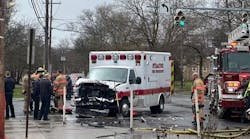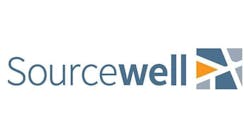In the everyday world of safety we constantly look for the situations that can cause an accident, injury, property damage, an illness, or even death. We do it intentionally and unintentionally. We do it with assistance from others and by ourselves. How, you ask?
Let's start with routine operational practices that parallel safety practices. Vehicle, equipment, and facility inspections, maintenance programs, etc. all are designed not only to enhance routine operations, but to assure safety is inherent in the overall operation.
Traditionally, within the safety discipline, there are several methods used to identify and analyze risks, or potential ways accidents can happen. These include:
- Surveys of equipment, apparatus and facilities, using checklists of specific areas to evaluate.
- Questionnaires, similar to surveys and checklists, can be used to evaluate conditions, practices, knowledge and skills to identify potential loss producing situations.
- Interviews of personnel, officers, and other staff who may have insights into what may cause accidents and how they can be prevented
- Financial Statements will indicate expense patterns related to maintenance, repairs, insurance payments and deductibles, overtime costs, and similar expenses that may be attributable to accidents.
- Records & Files, particularly regarding accident investigations and related loss reports can tell significant stories about loss causes and patterns, and how to prevent them.
- Forecasts can be created by analyzing the information in the records and files and turning the forecasts into preventative action plans for safety.
- Flowcharts are used in many industries to identify workflows, list the types of accidents and injuries that can occur at different points in the "flow", and therefore identify how to possible prevent accidents from occurring.
- Personal Inspections provide the opportunity for you to validate what you have seen in reports of others, safety committee or individual reports and complaints, financial documents and similar items.
- Experts may be needed from time to time to evaluate specific problems and provide resolution. Don't forget your insurance carrier in these instances. Most insurers provide a loss prevention staff that can be used to provide an "objective" third party source to analyze potential loss producing situations.
As you look at the information developed in your questionnaires, surveys, checklists, etc. it will begin to paint a picture for you that will tell you what and where you can anticipate accidents to occur.
Most emergency service organization losses are characterized as occurring in the station or at the emergency scene, and involving apparatus and affecting personnel and perhaps involving management liability. These are treated in many ways as being property, liability, personnel or net income losses, when classifying the type of loss, particularly for insurance payment or expensing through the organization. That we will save for a later lesson.
However, the data that is developed has a more significant use. The data will provide you with trend information, such as:
- what apparatus has what types of problems
- what firefighters are experiencing multiple injuries
- what types of injuries or accidents are most frequently occurring
- what types of injuries or accidents are causing disability situations or long term apparatus out of service situations
- what types of accidents or claims are occurring at our fundraiser events
- what types of maintenance issues are developing that are repetitive or costing us money over and over again
- what types of expenses are we occurring for accidents that are not covered by insurance
- on what days of the week, shifts, types of calls, etc. are accidents and injuries occurring
- do the accidents and injuries occur during particular officer's time as the supervisor
- does it appear that the membership takes personal responsibility for their own safety
- and the potential list goes on and on
As you can readily see, the identification and analysis of actual and potential loss, can be a painstakingly detailed process. However, once it is completed, it provides a wealth of information, not only regarding what types of problems you may face, but regarding how you may deal with them, either through loss prevention or risk financing techniques.
The bottom line regarding identification and analysis of loss is that it gives you an opportunity to learn from experience and prevent incidents from reoccurring. No fire officer wants their personnel to be injured, their apparatus to be damaged, or worse. To make this safe environment happen means the officers of the organization have to take control of the situation and protect the assets for the organization as much as possible. This means, when someone gets hurt, or an accident occurs, find out what caused it, how it could have been prevented and implement processes to keep it from happening again. By knowing about your past incidents and identifying the potential incidents, you have a great start to managing the impact of unwanted accidents on your organization.
LESSON #2: The practice of identifying and analyzing losses gives you a useful tool in focusing your time and effort in managing losses to those areas presenting real potential for problems.
Safety 101 -A new series from the technical and administrative perspective, designed to help you reduce emergency responder injuries, illnesses, property loss and death!
Related:





